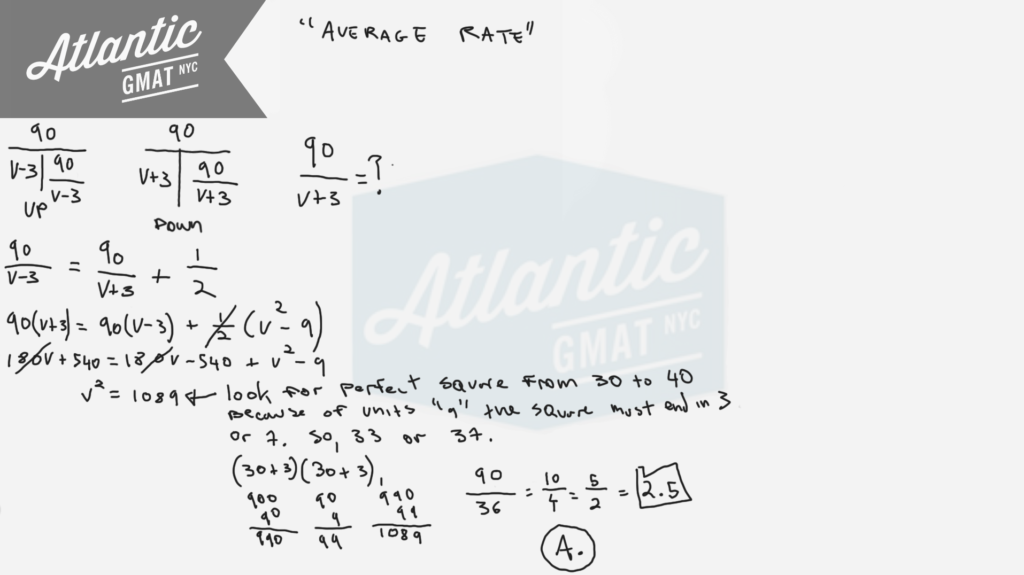(A) 2.5
(B) 2.4
(C) 2.3
(D) 2.2
(E) 2.1
This is a GMAT Average Rate question from the GMAT Prep tests. If you haven’t yet done the GMAT Prep Tests then better to avoid solving this now so you have a fresh test experience (also a video explanation linked/embedded below!).
Make sure to define the question: How many hours did it take the boat to travel downstream?
I’d organize this using the T’s. Just put the information where it belongs. Basically we need to solve for V and then plug that value into the downstream T to get the time.
There are two challenging things about this question that I see troubling GMAT tutoring students:
- Often the “half hour longer” gets translated into 30 minutes. That causes chaos. If you use minutes then everything must be changed to that unit. I wouldn’t suggest taking that route here.
- Quadratics freak people out and cause panic which leads to poor decision making. Just because there’s a quadratic doesn’t mean that it’s going to take a lot of work to solve. Slow down. Think about it for a second. Try to make a plan. In this case we know that the square must be between 30 and 40 (30*30 = 900, 40*40 = 1600) and must create a units digit of 9 limiting our options to 33 and 37. You might say: “but how do we know it’s going to be a perfect square”??? Well, do you see radicals in the answer choices??? Nope. Try 33 first because 1089 is much closer to 900 than 1600. Take your time with the arithmetic. I like to use distribution math for multiplication.Here are more Official GMAT distance, work, and rate question for which we use the T method: Pumps A, B, and C operate at their respective constant rates
Here’s a bunch of extra practice questions focusing on average rates:
Distance, Work and Rate – Average Rate 1
Distance, Work and Rate – Average Rate 2
Distance, Work and Rate – Average Rate 3
For more GMAT distance, work, and rate practice visit GMAT Question of the Day.
Here is the video explanation on the Atlantic GMAT youtube page: A boat traveled upstream a distance of 90 miles

